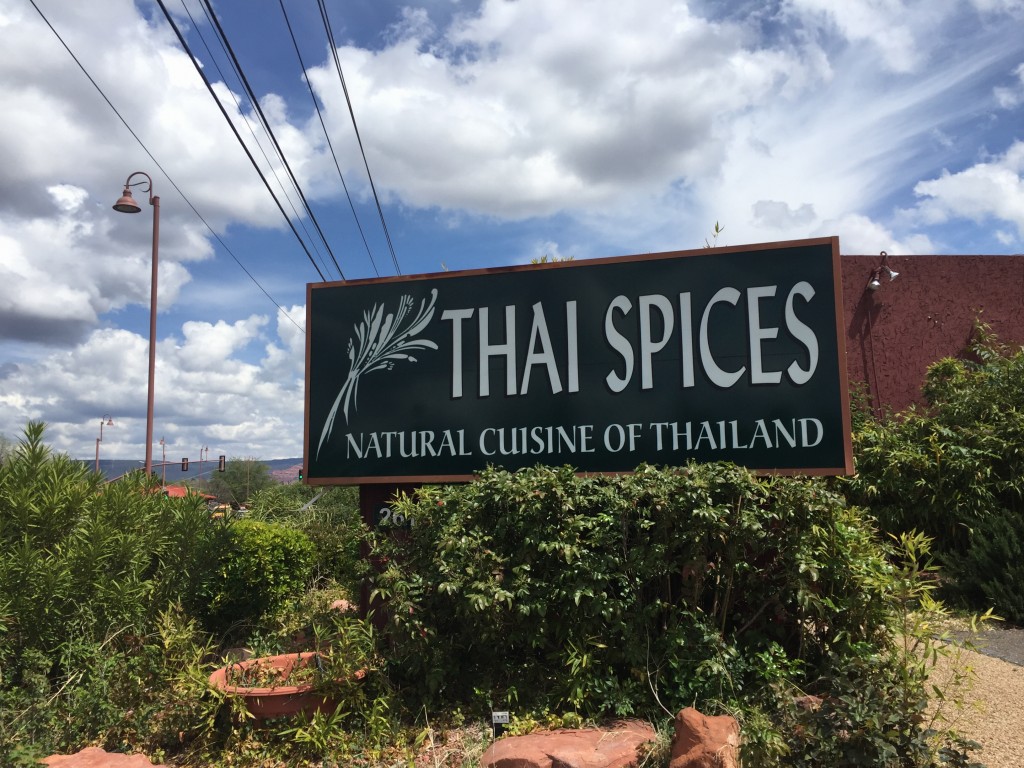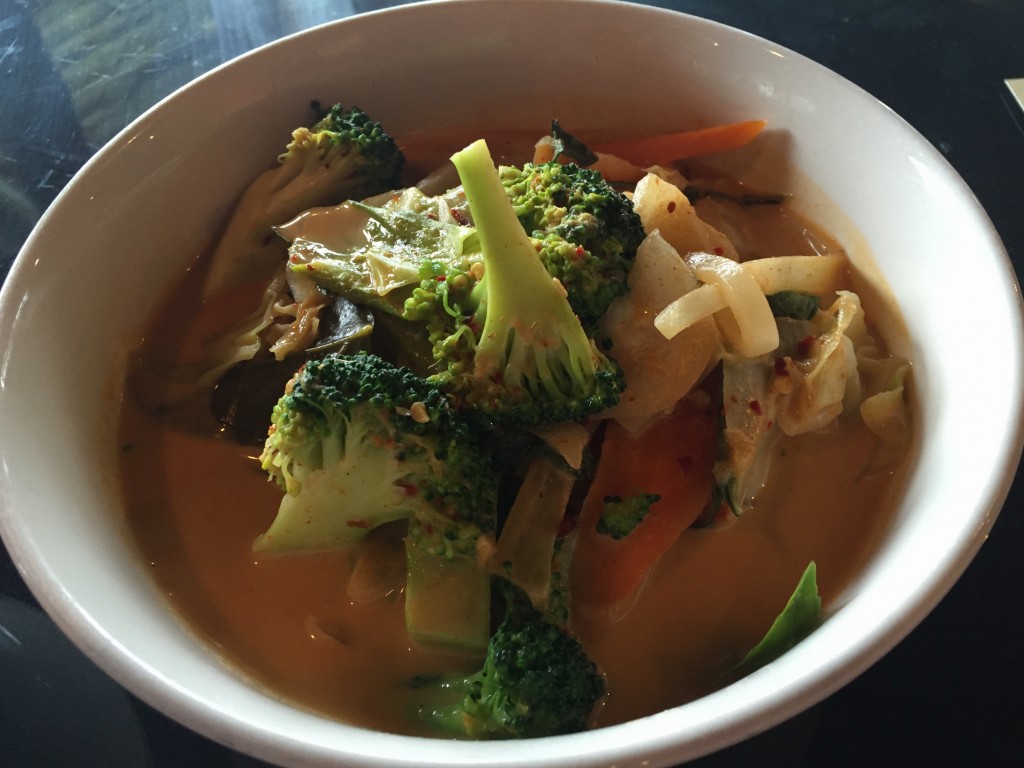I was curious about this restaurant because it advertised itself as being a combination of Thai and macrobiotic. I don’t know much about a macrobiotic diet, except it seems to involve a lot of brown rice, so I looked up the principles.
 Here’s what I learned from Macrobiotics for Dummies:
Here’s what I learned from Macrobiotics for Dummies:
- Whole grains make up about 25 to 30 percent of the diet
- Grain products: 5 percent (1 to 2 slices of bread or 1 to 2 servings of pasta)
- Vegetables account for 35 percent of the diet
- Beans or bean products (tempeh, tofu, so on), 5-10 percent, either canned or dried
Secondary foods, which are consumed in small amounts, are fruit, oils, seeds, nuts, very limited dairy products, a small amount of fish or other meat, fermented foods and pleasure foods.
So what would this mean for Thai food? I asked the waiter about this Thai/macrobiotic fusion, but he was busy and didn’t want to talk about it. So I had to figure it out for myself.

Red curry with tempeh at Thai Spices
Well, the first surprise was white rice. What?! We got red curry with tempeh, and almond vegetable curry (We chose green but you could also get red). Neither was very sweet, so they probably didn’t add sugar. There wasn’t any filler like in some Thai places where they cram dishes full of bamboo shoots and onion. No, Thai Spices used quality ingredients and big pieces of greens, like bok choy with the leaves attached. Kaffir lime leaves added flavor.
The salad rolls seemed particularly healthful: Packed with lettuce and cilantro, without the usual vermicelli noodles, and tofu that wasn’t fried. They were still good, even without delicious fried tofu. We felt virtuous after eating these salad rolls.
Thai Spices is a pretty restaurant with a good view of Sedona’s red rocks. It was busy on a Saturday at noon. If you want a true macrobiotic plate, call a day ahead to order. Your plate will be prepared by a trained macrobiotic chef.



